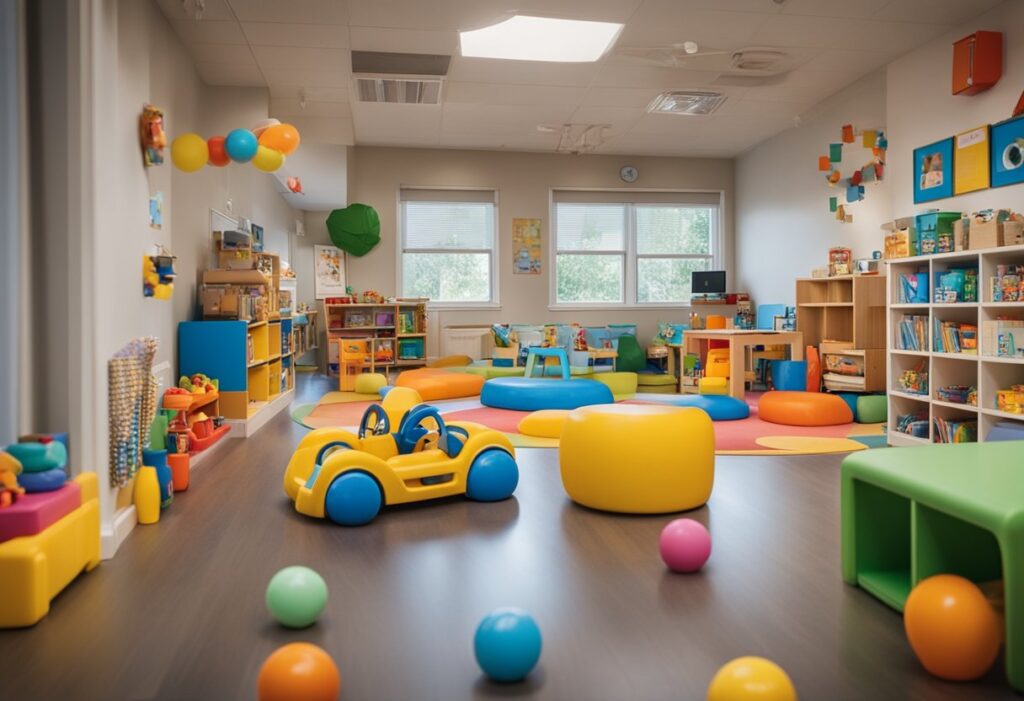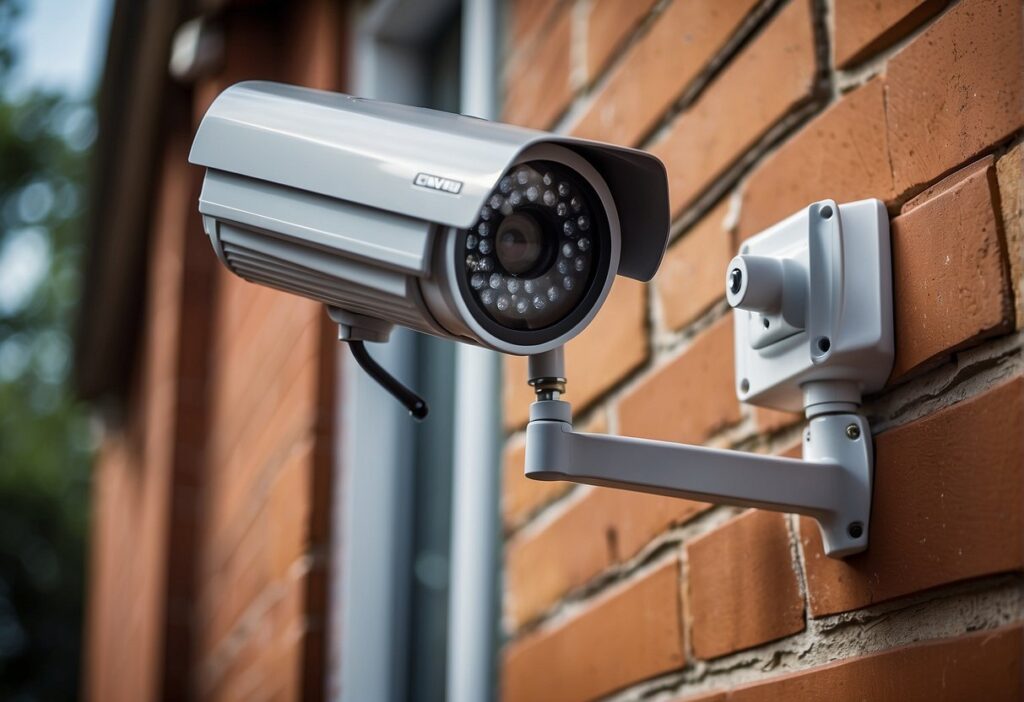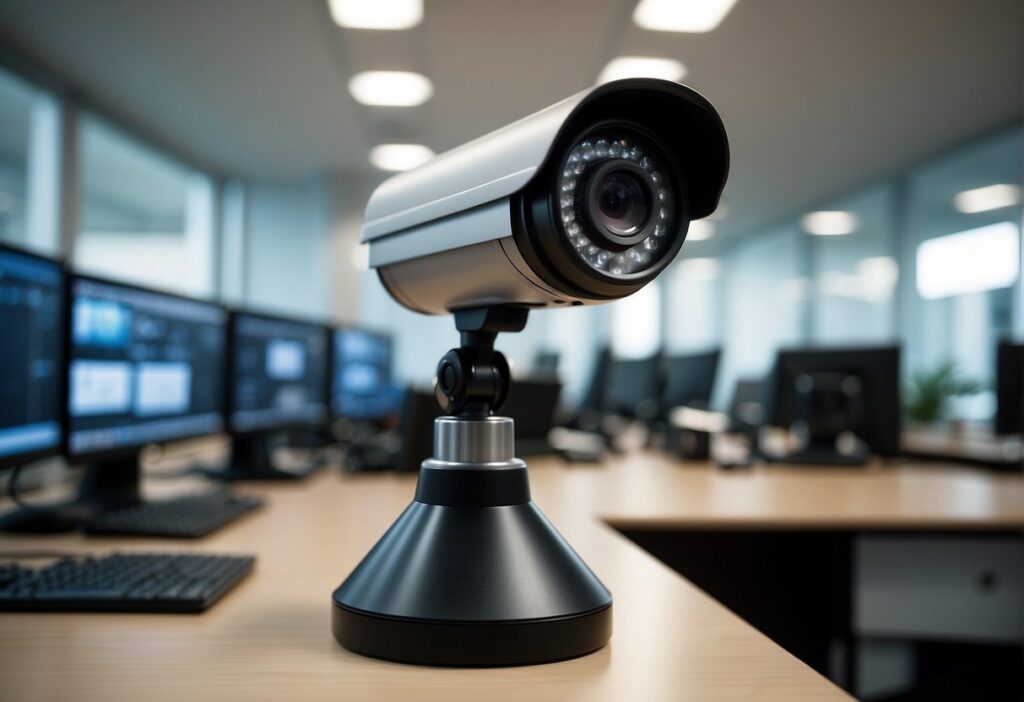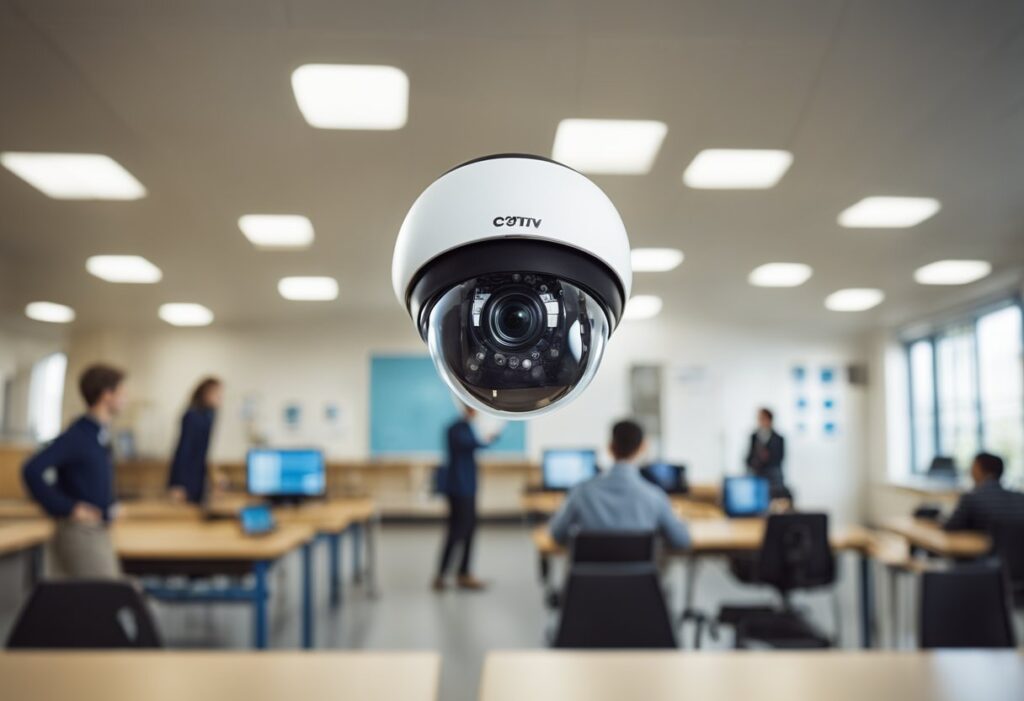Daycare with Cameras for Parents
In today’s childcare landscape, an increasing number of daycares are integrating camera systems, allowing parents to remotely observe their children’s daily activities, thereby enhancing safety and fostering stronger bonds despite physical separation.
This technology transcends traditional surveillance, offering parents a live window into their child’s development and interactions, and deepening their involvement in the childcare experience.
Key Takeaways
- Daycare camera systems grant remote visual access for parents.
- Cameras in daycares boost safety and transparency.
- Advanced technology could deepen parental engagement with childcare.
Daycare with Cameras for Parents: Understanding Daycare Camera Systems
When selecting a daycare, understanding the camera systems in use is crucial for parents concerned with surveillance and safety. These systems are implemented to increase security, offer real-time monitoring, and ensure peace of mind for families.
Types of Cameras Used in Daycares
Daycares typically use a range of security cameras that include CCTV, security cameras, and sometimes webcams for live streaming. CCTV cameras are generally used for recording footage, while security cameras can offer more sophisticated features like remote access and alerts.
For parents wanting to check in on their children, daycares may provide access to cameras that support live stream capabilities, allowing them to view video feeds in real time.
How Daycare Camera Systems Work
Daycare camera systems function by providing a live stream of video feeds that parents can access through secure platforms. These systems often include a network of interconnected cameras that cover different angles of the facility.
This network is connected to a central monitoring system which can be manned by staff or accessed remotely for periodic checks. Strategically placed security cameras and CCTV cameras ensure comprehensive coverage.
Video Quality and Bandwidth Requirements
Video quality in daycare centers can vary, ranging from standard definition to high-definition streams. Quality depends on the daycare’s investment in their camera system and the bandwidth available to support it.
Higher quality video requires more bandwidth, which can influence the smoothness and clarity of streaming video. Facilities must balance the need for clear images with the available network infrastructure to support real-time video without lag.
Security Measures and Privacy Concerns
Security measures are paramount in daycare camera systems to protect children and guard against hackers. Encryption, secure networks, and regular software updates are essential to safeguard the system.
Privacy measures should also be in place to ensure that video feeds are only accessible to authorized individuals. Daycares must address privacy concerns with transparent policies about who can access video surveillance feeds, for how long they are stored, and how the footage is secured.
Benefits of Camera Integration in Daycares

Integrating cameras in daycares brings multifaceted benefits, from enhancing child safety to promoting transparency. These technological additions address various concerns of parents while aiding childcare providers in maintaining high standards of care.
Peace of Mind for Parents
Parents often experience anxiety when separated from their children. Daycares with cameras provide reassurance by allowing them to view their child’s activities throughout the day. This visual access helps build trust between parents and childcare facilities.
Enhanced Child Safety
Safety is paramount in any childcare setting. Cameras act as a deterrent for potential incidents and ensure that children are in a safe environment. In the event of an accident, footage can be invaluable in understanding what happened, which is beneficial for both parents and staff.
Transparency in Childcare
Transparency is crucial for parents entrusting their children to others. Camera integration ensures that caregivers are accountable, and their interactions with children can be monitored. This encourages childcare providers to consistently deliver quality care, fostering a transparent and honest environment.
Choosing the Right Daycare Camera System
When selecting a daycare camera system, parents should prioritize systems that are user-friendly and secure. Features like high-quality video and easy-to-use software are essential for ensuring children’s safety and supporting the parenting journey.
Key Features to Look For
- Resolution: High-definition video allows for clear images, making it easier to monitor children’s activities.
- Storage: Look for systems with ample storage capacity or cloud solutions for video archiving.
- Access: Cameras should be easily accessible through a secure app or interface, allowing parents to check in from anywhere.
Deciding on Access and Control Options
- User Permissions: Daycare centers often set permissions for who can view camera footage, ensuring security and privacy.
- Software Interface: A simple, yet robust, interface helps parents navigate the system without frustration.
- App Integration: Cameras that integrate with a mobile app can offer parents real-time updates and alerts, smoothing the parenting journey.
Parental Involvement Through Camera Access

Parents today can actively participate in their child’s daytime environment thanks to the integration of camera systems in daycare centers.
This technology fosters a transparent connection between families and the day-to-day activities within these facilities, simultaneously providing fun, love, and support for children, while managing parental anxiety with real-time access.
Connecting Families with Daycare Activities
Integrating cameras within daycare settings enables families to see their children engage in educational and recreational activities. This real-time visibility can be a source of comfort and joy as parents witness these candid moments, fostering a fun environment even from a distance.
Technology bridges the gap, ensuring that no memorable event is missed and strengthening the bond between the daycare environment and the family unit.
Managing Anxiety and Separation
For many parents, leaving their child at daycare can trigger separation anxiety. Real-time camera access assuages these fears, providing assurance that their child is safe and well-cared-for.
This visual confirmation supports parents emotionally, reducing anxiety and allowing them to focus on their day with confidence that their child is in a supportive environment, surrounded by attentive care and love.
Legal and Ethical Implications
Incorporating cameras in daycares has legal and ethical ramifications that affect parents, staff, and children. Owners and operators must navigate the balance between maintaining safety and respecting privacy.
Compliance with Laws and Regulations
Daycare centers must adhere to state and federal laws when implementing surveillance systems. The presence of cameras is typically governed by privacy laws that could require obtaining consent from parents and caregivers.
For example, certain states might mandate that all parties in a childcare setting must be informed about the surveillance to prevent any breaches of privacy. In some circumstances, these video recordings could be subject to a subpoena if they contain evidence relevant to a legal case.
Ethical Use of Surveillance in Childcare Environments
The ethical use of cameras in daycare settings hinges on transparency and the intention behind monitoring. It is crucial that daycares use surveillance not for intrusive monitoring but to enhance the safety and security of children.
Clear policies around who can view footage and how long it is stored are essential to uphold ethical standards and maintain trust between parents and staff. Moreover, ensuring that surveillance does not infringe on personal dignity or disrupt the childcare environment is paramount.
Considerations for Daycare Providers
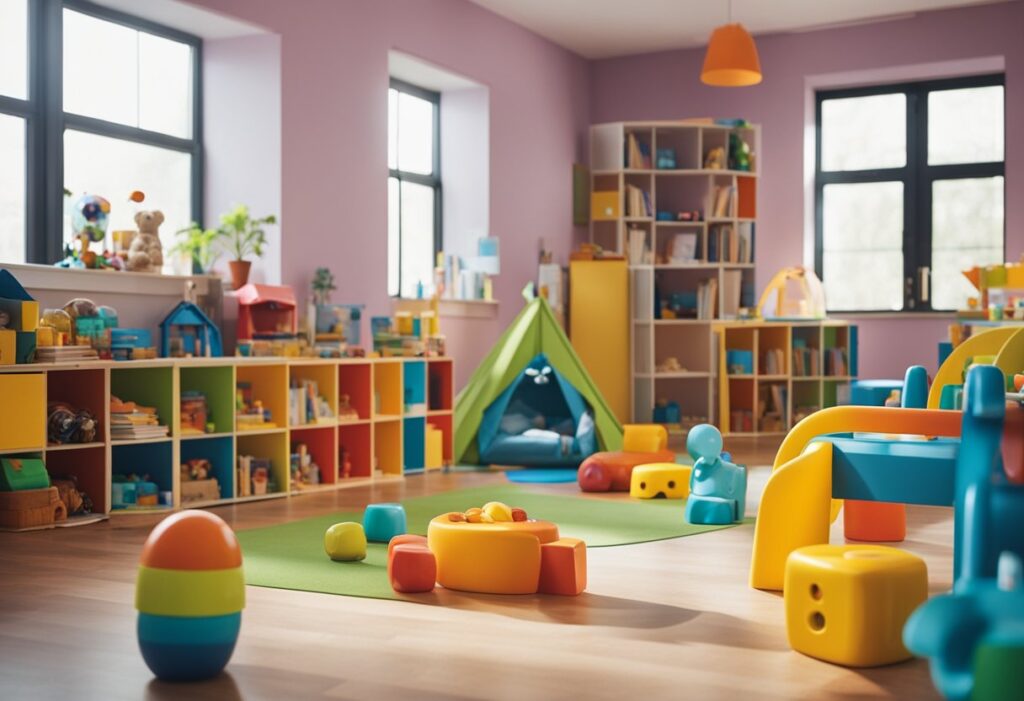
When incorporating cameras into daycare settings, providers must carefully consider how to uphold safety and security while maintaining the privacy and trust of all involved parties, including parents and staff.
Balancing Safety and Privacy
Daycare providers have the dual responsibility of ensuring the safety of children and respecting the privacy of both staff and children. It is important to implement cameras in a manner that monitors key areas for security purposes while avoiding unnecessary surveillance in private spaces like bathrooms.
Providers should also clearly communicate with parents and teachers about the scope and purpose of the surveillance to prevent any misunderstandings or a false sense of security.
Implementing Daycare Cameras Without Intrusion
To introduce cameras in a non-intrusive manner, daycare providers must be strategic in placement and usage. This may involve using discrete cameras that still cover all common areas where children and caregivers interact.
Companies like WatchMeGrow offer solutions designed to be minimally invasive while still providing comprehensive coverage. Providers should also establish strict policies on who can access the live feeds and recordings, ensuring they are used solely for the intended purpose of promoting children’s welfare.
Maintaining Trust with Parents
Trust is paramount in the relationship between daycare providers and parents. Transparent policies regarding camera usage, data storage, and access can provide parents with peace of mind without creating a false sense of security.
It is crucial for providers to offer exceptional customer service by addressing concerns and providing clear, accessible channels for parents to receive information about the implementation and operation of surveillance systems.
This transparency and open communication are essential for maintaining a trusting relationship with parents.
Impact on Daycare Operations
Integrating cameras into daycare environments necessitates changes in staff training and protocols, and also influences how incidents are managed and communicated.
Staff Training and Protocol Adaptation
Daycare providers need to undergo comprehensive training to ensure responsible use and monitoring of camera systems. This training should educate staff on privacy concerns, appropriate monitoring techniques, and use of footage for reviewing day-to-day operations.
Protocols must be adapted to integrate camera oversight, which includes designating individuals responsible for regular footage review and maintaining camera systems.
Handling Incidents and Communications
When an incident occurs, having cameras in place offers supportive evidence that can clarify events, thus aiding in effective communication between the daycare and parents. It is crucial for daycare centers to have clear guidelines on how incidents are reported to parents, including when to provide access to relevant video footage.
This transparency can bolster trust and can ensure that both staff and parents are unified in their approach to customer service and support for the children in their care.
Advancements in Daycare Camera Technology
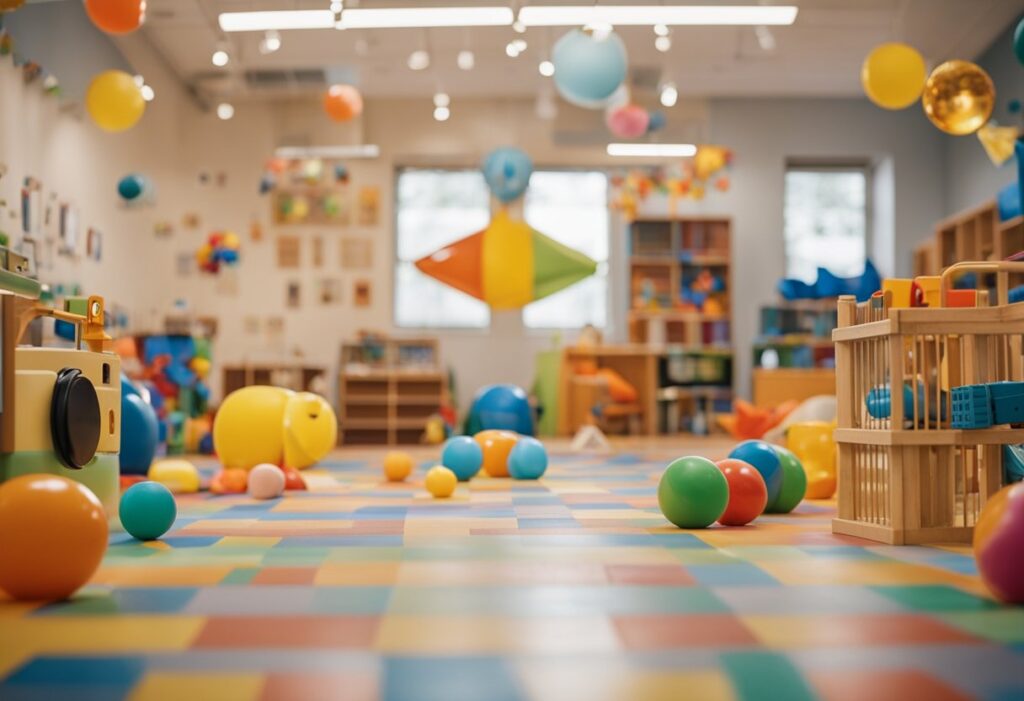
Recent years have seen significant advancements in daycare camera technology. These improvements have greatly enhanced the ability of childcare centers to monitor and ensure the safety of children.
Emergence of AI and Machine Learning
Daycare camera systems have evolved to embed Artificial Intelligence (AI) and Machine Learning (ML) algorithms. These smart technologies contribute to more sophisticated monitoring solutions.
They allow for features such as real-time activity analysis, where cameras can recognize specific events or behaviors, and automated alerts can be sent to staff if unusual activity is detected.
Incorporating AI into camera systems enables facial recognition capabilities, which add an additional layer of security by regulating who can access the facility.
Machine learning, in turn, enhances cameras with predictive analytics, improving over time as the system learns from the data it collects.
This leads to smarter, more responsive surveillance that adapts to the unique environment of the daycare.
Moreover, smart technology integration means cameras can now compile and analyze vast amounts of data efficiently. This becomes crucial in creating a safer environment for children, as potential risks can be identified and mitigated quickly.
As machine learning algorithms improve, they can provide actionable insights that weren’t possible with traditional systems.
Overcoming Potential Drawbacks
When considering the installation of cameras in daycares, parents and providers face certain challenges, particularly around privacy and security, along with maintaining a reliable system that mitigates false alarms.
Addressing Privacy and Security Challenges
Privacy concerns are paramount when implementing camera surveillance in a daycare environment.
Daycare providers can establish strict protocols for who has access to camera feeds, ensuring only authorized personnel can view the live streams or recorded footage.
Implementing robust password protection and encryption for digital feeds is a prerequisite to maintaining a secure environment that respects everyone’s privacy.
Ensuring Reliability and Reducing False Alarms
For parents to trust the surveillance system’s reliability, daycares need to invest in high-quality equipment that minimizes downtime and technical issues. Regular maintenance should be scheduled to prevent disruptions in service.
Additionally, using advanced motion detection software can help reduce the occurrence of false alarms, which can lead to undue stress for parents and staff.
Daycares should also have a clear protocol in place for verifying incidents, ensuring accurate and prompt responses.
The Future of Parental Engagement

The landscape of parental engagement is shifting rapidly due to advancements in technology. These changes are enhancing how parents and childcare providers interact and monitor children’s progress and safety.
Technological Innovations in Childcare Monitoring
Childcare facilities are increasingly adopting advanced monitoring systems to ensure the safety and well-being of children. They now use high-definition cameras that allow parents to observe their children’s activities in real-time through secure online portals or dedicated mobile apps.
This level of monitoring provides reassurance and a sense of connection, as parents can virtually be a part of their child’s day. Some centers, as highlighted by Illumine, are implementing comprehensive CCTV systems tailored to both safety and staff supervision.
Expanding Parent-School Communication Channels
Communication between parents and schools is evolving beyond traditional methods like newsletters and scheduled meetings. Educational institutions are leveraging technology to create continuous and instant communication streams.
For instance, specialized child care apps not only streamline administrative tasks but also foster direct, real-time chats between parents and teachers. This allows for instant feedback and discussions about a child’s educational development, strengthening the involvement of parents in the school community, as seen in platforms discussed by Procare Software.
Conclusion
Daycare with Cameras for Parents
Daycare cameras serve as a crucial tool in safeguarding the welfare of children. They offer a layer of protection and oversight, enabling parents to have a degree of involvement in their child’s daily environment even when they are not physically present. The installation of cameras in daycare settings promotes accountability and transparency among caregivers.
Parents appreciate the peace of mind that comes from knowing their child is within view, reassured by the fact that the daycare’s operations are subject to review and monitoring. These surveillance systems encourage a high standard of care and may lead to an increase in communication between providers and families. Consequently, they can contribute positively to the overall child care experience.
However, the discussion around daycare cameras is multifaceted, weighing aspects of privacy against the benefits of surveillance. Implementing such systems demands adherence to legal standards and respect for the privacy of all parties involved. It is essential that daycare providers and parents navigate this balance to foster an environment of trust and security.
Frequently Asked Questions
When choosing a daycare with camera systems, parents often have important concerns regarding accessibility, legality, the quality of daycares that provide camera access, and the implications for safety and privacy.
Is it good to have camera in daycare?
Cameras serve as a protective measure for staff and children during emergencies, offering visual proof in disputes or abuse allegations. Additionally, they grant daycare staff a unique perspective of the classroom, helping them recognize and tackle potential issues.
How can parents access the daycare camera system to watch their child?
Parents typically gain access to a daycare’s camera system through a secure online portal provided by the service, such as that offered by KidsVision. They receive unique login credentials to ensure the security and confidentiality of the live feed.
How do I leave my toddler at daycare?
Ease daycare drop-offs by practicing them beforehand, managing your emotions, and arriving early to focus on your child’s experience. Explore the classroom together, be mindful of their separation anxiety, validate their feelings, and highlight the positive aspects of their day.
How do I know if my toddler is unhappy at daycare?
If your daycare frequently contacts you to soothe your child, or they take longer to adjust at daycare, these may be signs of abnormal anxieties. Changes in behavior and sleep patterns, altered morning energy, and increased clinginess at home are additional indicators.
What are the legal requirements for daycares to have cameras in various states?
The legal requirements for daycares to have cameras vary by state; some states mandate cameras for safety reasons, while others may leave the decision to the daycare’s discretion. Parents should inquire about their state’s regulations or consult with legal resources for specific mandates.
How long does it take for 2 year old to adjust to daycare?
The adaptation period for a child at daycare typically spans two to four weeks, influenced by their age and temperament. However, some toddlers may require up to two months to become comfortable with the new environment and educator.
Which are the top-rated daycares that offer camera access to parents?
While specific names of top-rated daycares with camera access are beyond this article’s scope, parents can search for facilities that provide live streaming features and read reviews to assess the quality and reliability of services, such as security and ease of access.
How does the presence of cameras in daycares impact child safety and parent peace of mind?
Cameras in daycares enhance child safety by deterring potential misconduct and providing a means of verification in the event of incidents. They also offer parents a reassuring glimpse into their children’s daily activities, contributing to peace of mind.
Can parents request daycares without cameras to install them, and how?
Parents may request the installation of cameras in a daycare by presenting a formal proposal to the administration, highlighting benefits such as increased security and transparency. Open dialogue about privacy, consent, and financial implications is crucial for such discussions.
What measures do daycares with cameras take to ensure the privacy and security of the footage?
Daycares with cameras implement strict privacy policies and security measures such as encrypted video feeds, restricted access, and regular system audits to protect the footage. They ensure only authorized individuals can view the live streams or recorded footage, as detailed on websites like Childcare Network.
